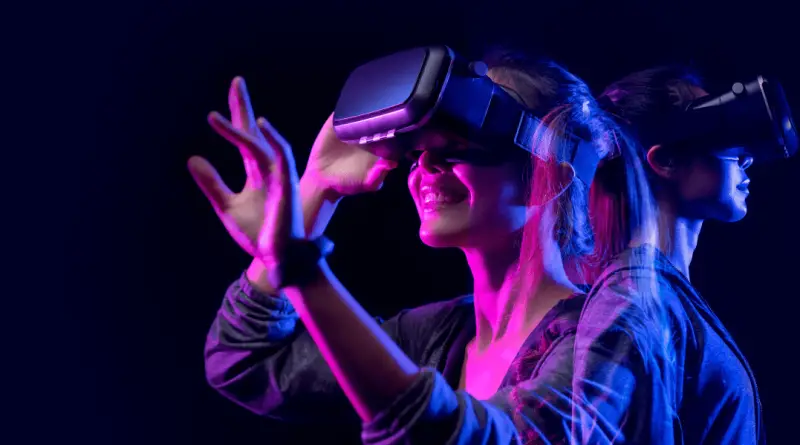The Future of Sound: AI Voice Cloning for the Metaverse
Science fiction writers developed the concept in the twentieth century with the goal of creating an infinite three-dimensional digital world. Today, this world will be as easy to access as the internet, according to the plans of modern tech titans.
Technologists have long sought to create a better parallel world full of possibilities. On the subject, numerous fairy tales, fantasy novels, and films have been written. Typically, the main characters enter worlds that allow them to live lives that are diametrically opposed to those they lead in the physical world.
The term “metaverse” has exploded in popularity in recent years, appearing in the context of Fortnite, Roblox, Minecraft, Animal Crossing, and AR and VR technologies. For example, in 2021, the CEOs of Microsoft, Epic Games, and Facebook all spoke about the evolution of their respective metaverses. And each company has its own distinct vision of the future virtual universe. According to Bloomberg, the metaverse will be worth $800 billion by 2024.
So now is the time to figure out what the metaverse is, what it isn’t, how it can be created and for whom, what is required for success, and why audio is so important in its development.
What Exactly Is the Metaverse?
The metaverse is a platform that developers create and users use. Each individual contributes to the virtual world independently, based on their own imagination and desires. The metaverse combines virtual and augmented realities.
Science fiction writers developed the concept in the twentieth century with the goal of creating an infinite three-dimensional digital world. Today, this world will be as easy to access as the internet, according to the plans of modern tech titans.
Unlike today’s virtual reality, which is primarily used for gaming, this virtual world can be used for almost anything—work conferences, games, concerts, movie watching, or simply relaxing. To enter this world, simply transform into a 3D avatar.
The metaverse concept is directly related to blockchain, specifically gaming NFTs. It is possible to monetize the created game content in this regard. The metaverse, on the other hand, is not just a “computer game,” but places where people can work, study, communicate, and shop.
Metaverse Examples
The pandemic heightened interest in the concept of the metaverse. In the face of lockdowns, demand for remote work and online entertainment has skyrocketed. Although there are numerous ideas about what the metaverse should be, the majority of them are based on human interaction. This, of course, was not lost on large corporations. Facebook, Microsoft, and Epic Games are among them. In July 2021, Facebook founder Mark Zuckerberg was the most vocal proponent of the development of the metaverse, even renaming his company Meta to confirm the seriousness of his intentions.
According to Zuckerberg, it will be a complete virtual world for communication, work, and entertainment, where users will be able to physically sense the presence of other users.
Microsoft also announced the creation of its own metaverse, which began by transforming traditional office life through the use of its Azure cloud technology. The company announced that its Teams video conferencing service will have virtual spaces and 3D avatars for communication, data exchanges, and routine work as early as the first half of 2022.
A Decentraland platform—a “decentralized virtual world” powered by Ethereum—is one of the most vivid examples of a metaverse. It is a virtual metaverse in which users can purchase and sell digital real estate while exploring the world, interacting with one another, and playing games.
Users on Decentraland have their own avatars and nicknames. Sandbox, Mirandus, and Axie Infinity are examples of similar platforms.
The Metaverse’s Importance of Voice Avatars and Spatial Audio
People in the real world use their voices to express their emotions and better convey ideas. The metaverse’s goal is to achieve a sense of maximum parallel reality as a result of what is happening in it. This is accomplished by providing a consistent world with high-quality visual and audio components. Voice avatars and spatial audio are two important audio components in the creation of a metaverse.
Avatars for Voices
Because digital avatars define a user’s presence in a metaverse, it is critical to provide these avatars with all of the audio elements that humans have in reality. When designing a metaverse, much emphasis is placed on the visuals and the appearance of the avatars in the metaverse. There is far less focus on audio in the metaverse and what everyone’s avatar will sound like. However, in order to achieve consistent and natural conversations between avatars, the way they sound must be prioritized. Robotic voices will have to be consigned to the history books.
Audio in Space
A true metaverse necessitates faultless spatial audio. Companies such as Meta and Microsoft have invested in spatial audio for their virtual reality hardware and platforms. One of the most important components required to create a true sense of presence in a 3D environment is spatial audio. It is also necessary for online meetings, parties, and games.
Once a spatial audio ecosystem is in place, it will provide a truly immersive experience of the contactless, or virtual, concerts that have grown in popularity as a result of the global pandemic.
How Can Synthetic Voices Help You in the Metaverse?
Synthetic voices can improve the consistency of your company’s metaverse experience and the interactions of your avatars. Google and Amazon have long experimented with giving their respective assistants different voices, including cameos by celebrities such as John Legend and Issa Rae. This is probably the most appealing aspect of using synthetic voices: you can give your avatars almost any voice you want.
You can use AI voice cloning to bring your in-game character to life or to complete your online persona. Learn how to use Respeecher’s voice cloning technology to boost your metaverse presence. Our voice swaps are almost indistinguishable from the original—and never sound robotic.
The key to creating a proper metaverse is to close the gap between the physical and virtual worlds. Because of its 360-degree sound delivery, spatial audio can aid in this process.




